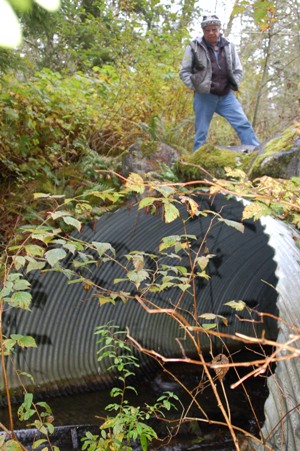More complaints have been lodged that the big-box retailer’s shelves at many stores aren’t adequately stocked and lines are long at registers.
By Renee Dudley, Bloomberg News
More than 1,000 emailed complaints signal that Wal-Mart stores’s restocking challenges are more widespread than the world’s largest retailer has said.
Wal-Mart customers from Hawaii to Florida and from Texas to Vermont wrote to express their frustration after Bloomberg News reported March 26 that there aren’t enough workers in the stores to keep shelves stocked, cash registers manned and shoppers’ questions answered. In response to the original article, Wal-Mart spokeswoman Brooke Buchanan said in part, “The premise of this story, which is based on the comments of a handful of people, is inaccurate and not representative of what is happening in our stores across the country.”
The emails began arriving shortly after the article was published and were still coming a week later. Most were from previously loyal Wal-Mart customers befuddled by what had happened to service at a company they’d once admired for its low prices and wide assortment. Many said they were paying more and driving farther to avoid the local Wal-Mart. Some had developed shopping strategies, including waiting until the last minute to grab ice cream, lest it melt in the lengthy checkout lines.
Wal-Mart founder “Sam Walton must be rolling over in his grave to see what has become of his business,” said Tony Martin, 54, a forklift driver who once frequented a store in Glen Carbon, Ill.
Wal-Mart’s restocking challenges stem from a thinly spread labor force struggling to keep up with all the work that needs to be done, said Colin McGranahan, an analyst at Sanford C. Bernstein & Co. in New York. The Bentonville, Ark.-based retailer’s work force at its namesake and Sam’s Club warehouse chains in the U.S. fell by about 120,000 employees between 2008 and Jan. 31, according to a securities filing on March 26. The company now has about 1.3 million U.S. workers. In the same period, it has added about 455 U.S. Wal-Mart stores, bringing its total to 4,005.
McGranahan said he has talked to workers who say they’re being asked to do more than they can accomplish in a shift.
“Stuff gets backed up, and they’re forced to respond as best they can,” said McGranahan, who rates Wal-Mart market perform, the equivalent of a hold. “The result is an increasing amount of customer-encountered out-of-stocks.”
Those items are missing at a crucial time for Wal-Mart, when the U.S. economy already is restraining its shoppers’ spending. Same-store sales for Wal-Mart’s U.S. locations in the 13 weeks ending April 26 will be little changed, Bill Simon, chief executive officer of Wal-Mart U.S., said on a Feb. 21 earnings call.
Wal-Mart said the customers complaining to Bloomberg aren’t a sufficient sample size and don’t represent shoppers’ impressions of its stores nationwide. The company surveys more than 500,000 customers a month, asking them about checkout lines, store cleanliness and the helpfulness of workers, Buchanan said Monday in emailed statement.
“These customers continue to tell us they have had a positive shopping experience and those numbers have trended upward over the past two years,” she said. “Our in-stock shelf availability is at historically high levels and averages between 90 and 95 percent. We will continue to work hard for our customers and meet their expectations by offering them everyday low prices on the broadest assortment of merchandise.”
Wal-Mart U.S. had sales of about $274.5 billion in the year ended Jan. 31, more than the total sales of Target and Costco Wholesale combined in their comparable periods. Wal-Mart says two-thirds of Americans shop at Wal-Mart each month. The company also had 6.6 billion visits to its U.S. stores in the last year, up 23 million from a year earlier, Buchanan said.
Still, investors have lost some enthusiasm for Wal-Mart. It closed at a 0.2 percent discount to Target on a price-to- earnings basis Monday, compared with an average 7.3 percent premium during the past year. Wal-Mart on March 20 traded at a 3.2 percent discount to its smaller rival, the lowest in more than a year.
Martin, the forklift driver, said Wal-Mart’s low prices don’t matter because it’s no longer a one-stop shopping destination.
“As much as I need to take advantage of the low prices that Wal-Mart has to offer, the money I would save” is spent on gas to drive to other stores to buy the items that were missing at Wal-Mart, he said. “So it is easier to just shop elsewhere.”
Bob Shank Jr., 68, of Tucson, Ariz., said there are two Wal-Mart stores in his area. At the older one, there are “different items left on shelves where they don’t belong, items on the floor not replaced, empty shelves.” The new store has “bare shelves” and “few employees visible, especially at the check-out counters.”
Shank tried several times to buy his favorite rum and eventually asked whether the brand had been discontinued. He got the same response at both stores: ” ‘No’, they said, ‘we just haven’t had time to re-stock.’ ”
Mike Grimes, 61, said he and his wife expect to wait at the Wal-Mart supercenter in Sikeston, Mo.
“We wait until we’re about to put items on the conveyer belt, then one of us will run back and get the ice cream,” said Grimes, who operates a furniture and appliance store. “Otherwise it will melt. We know we’ll be standing in line 20 minutes or more.”
Barry Hastings, 65, said he rarely completes his shopping list at the Wal-Mart in Fredericksburg, Va.
“They run out of Simply Lemonade. No stock on Dr Pepper seven-ounce cans. No ground pork, no onions, no green beans, and the list goes on and on,” said Hastings, who photographs the empty shelves and shows them to store managers as proof of the problem.
Rosemary Alvino-Ditmore, 63, of Sierra Vista, Ariz., a self-employed writer who shops at Wal-Mart at least twice a month, keeps a running list of items she’s been unable to find over the past year: oatmeal, nutrition bars, Suave shampoo, clothing patches, distilled water, drapes, sweatpants, knee-highs and more.
“Why have this huge Wal-Mart if you always have pegs empty or empty shelves?” she said.















